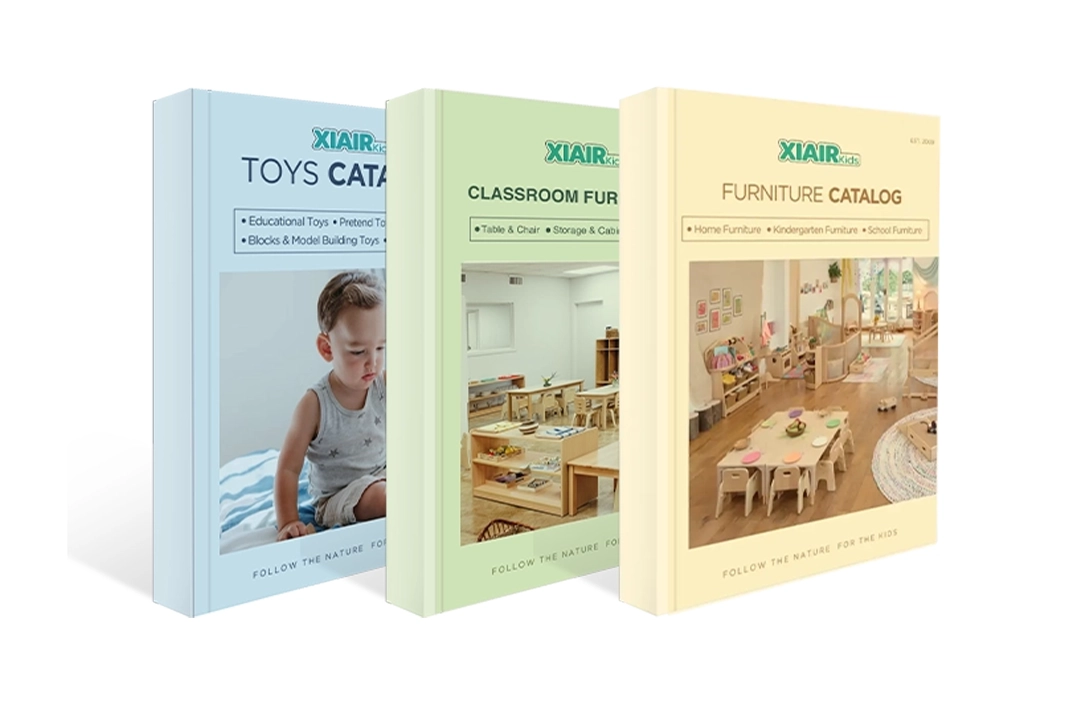Comprehensive Art Craft Supplies for Educational Environments
Our Art Craft Supplies are carefully selected for preschool, offering a wide range of safe and age-appropriate materials. Perfect for developing hands-on creativity, fine motor skills, and classroom projects. Each supply meets safety standards, making it ideal for early childhood education environments.
Versatile Art Supply Storage Solutions for Classrooms
Our Art Supply Storage solutions are designed to organize and protect a wide range of creative materials in daycare settings. Choose from mobile art carts, multi-compartment shelving units, tabletop organizers, drawer cabinets, and wall-mounted storage systems—each built with child-safe materials and smooth edges for easy classroom use. Optimize your space and keep your art materials in perfect order with our specialized storage systems, making them easily retrievable and systematically arranged for your convenience.


Double Side Trolley Art Cart
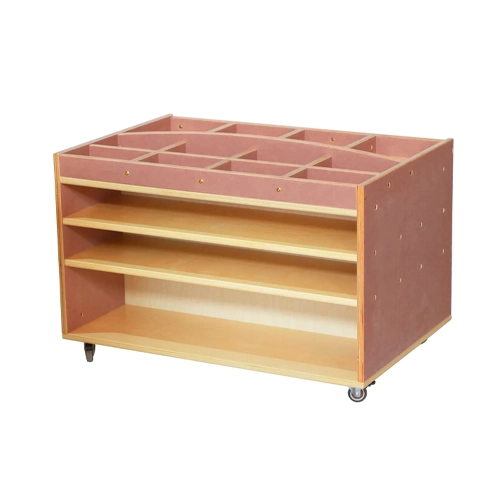
Mobile Art Supply Cart

Mobile Art Cart with Storage Shelves

Kids' Art Activity Cart

Mobile 3-Shelf Art Cart

Multi-Use Mobile Art Supply Center

3-Tier Art Cart Organizer

Art Supply Cart
Understanding the Importance of Art Supply Storage
Before diving into the specifics of choosing art supply storage, it’s essential to understand why it matters. Effective art supply storage doesn’t just keep materials in order—it can also improve workflow, enhance safety, and encourage creativity. Here’s how proper storage benefits the classroom:
Promotes Organization
With clear storage solutions, students can easily access supplies without wasting time searching for materials. This helps streamline lessons and keep students focused.
Enhances Safety
Art materials like scissors, glue, and sharp objects can pose a safety risk if not stored properly. Proper storage ensures that supplies are kept out of reach when necessary.
Improves Durability
Many art supplies, such as paintbrushes and markers, are delicate and need to be stored properly to extend their lifespan. You can protect your materials from damage.
Encourages Responsibility
When students know where to find and return supplies, they are more likely to take responsibility for them. A clean, organized space fosters a sense of order and care.
Choosing the Right Art Supply Storage for Your Classroom
Now that you have an idea of the various storage solutions, it’s time to consider which one is best for your classroom. Here are some factors to keep in mind when making your decision:
-
Доступное пространство Assess the size of your classroom and available storage space. If your room is small, opt for compact or vertical storage options like rolling carts, wall-mounted shelves, or stackable bins. If space is less of a concern, consider larger storage units like cabinets or shelving units.
-
Student Age Group The age group of your students also affects your storage choices. Younger students may need storage solutions that are low to the ground and easy to access, while older students may be able to handle more complex storage systems like multi-shelf cabinets or rolling carts.
-
Number of Supplies Take stock of the quantity and variety of art supplies in your classroom. A classroom with a large assortment of materials will require more extensive storage options, such as drawers, bins, or cabinets. For smaller collections of supplies, you may find that a rolling cart or wall-mounted shelf is sufficient.
-
Budget Budget constraints can influence the storage options you choose. While cabinets and custom-made storage solutions can be expensive, more affordable options like bins, carts, and plastic drawers can be equally effective. Consider what fits within your budget while still offering practical organization.
-
Ease of Access and Maintenance Look for storage solutions that are easy for students to use independently. A sound storage system should be easy to maintain and organize, with clear labeling and accessible placement for commonly used supplies. Make sure that the system you choose encourages students to keep materials in their designated places.
-
Прочность Art supplies can be heavy and occasionally messy. Choose storage units made of durable materials that can withstand the weight and wear and tear of everyday classroom use. Materials like heavy-duty plastic, metal, or wood can provide long-lasting solutions for your storage needs.
Different Types of Art Supply Storage
There are various types of art supply storage solutions available, each catering to different needs. Here are a few options:

Shelving Units

Storage Bins & Drawers

Mobile Carts

Cabinets and Lockers
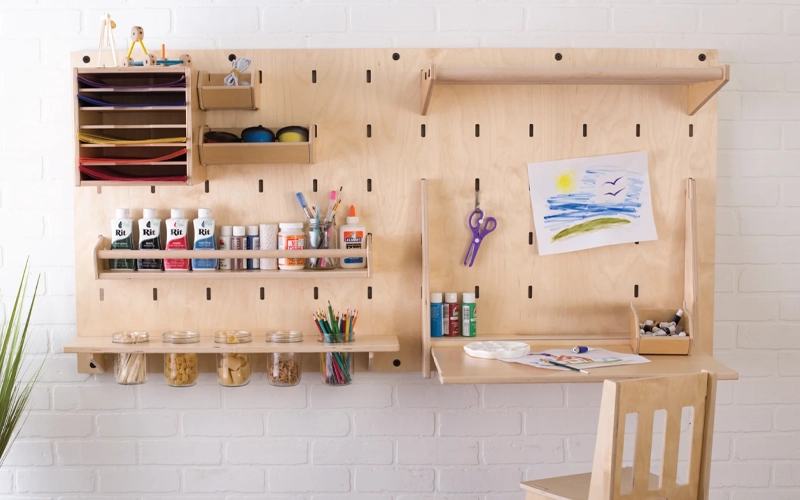
Настенные полки

Plastic Bins and Baskets
Are Art Supply Storage Materials
Different materials are used to construct art supply storage, each with advantages and disadvantages. Below are some of the most common materials used:
-
Пластик Assess the size of your classroom and available storage space. If your room is small, opt for compact or vertical storage options like rolling carts, wall-mounted shelves, or stackable bins. If space is less of a concern, consider larger storage units like cabinets or shelving units.
-
Древесина Wooden storage units offer a classic, sturdy, highly durable appearance. They provide a high-quality aesthetic and can support heavier supplies. The downside is that wood can be more expensive and is susceptible to moisture damage if not sealed properly.
-
Металл Metal storage units are highly durable, resistant to damage, and easy to maintain. They are great for keeping art supplies safe and organized. However, metal can be heavy and potentially prone to rust if exposed to moisture.

Customizable Storage Solutions
Every classroom has unique needs, so customizable storage solutions are often the best choice. Customizing your art supply storage means you can tailor it to the specific demands of your classroom. Whether adding extra shelves or using modular units that can grow as your needs change, these adaptable solutions ensure you’ll always have enough space.
Modular systems allow you to adjust the height or number of compartments based on your storage, ensuring maximum efficiency for various art materials. Custom-built storage systems can also be designed to fit specific areas in your classroom, making the most of your available space.
Tips for Maintaining Your Art Supply Storage
Maintaining an organized art supply storage system requires a little effort, but the benefits are worth it. Here are some tips for keeping your storage system in tip-top shape:
Regularly Reassess and Purge
Art supplies accumulate over time, and some items may no longer be usable. Periodically reassess your storage system and remove outdated or unused materials.
Label Everything
Label bins, drawers, and shelves so students and teachers can quickly identify what’s inside. This will help everyone stay organized and save time.
Encourage Students to Help
Get students involved in organizing and maintaining the storage area. This can foster a sense of responsibility and help keep supplies in order.
Establish a Routine
Set a time at the end of each week to check the condition of your storage units. This allows you to fix any issues and ensure that everything is in its proper place.
Versatile Easels for Preschool Art Activities
A wide variety of easels and drying racks are available to meet the needs of any educational environment. Options include double-sided easels, adjustable-height easels, magnetic whiteboard easels, chalkboard easels, and multi-panel painting easels. Each model is built with sturdy, child-safe materials and designed to support group work or individual creativity.


Toddler Double-Sided Easel

Three Way Preschool Easel

Adjustable 4-Sided Easel

Easel Stand for Display

Kids Tabletop Easel

Movable Easel with Storage

Station Art Easel
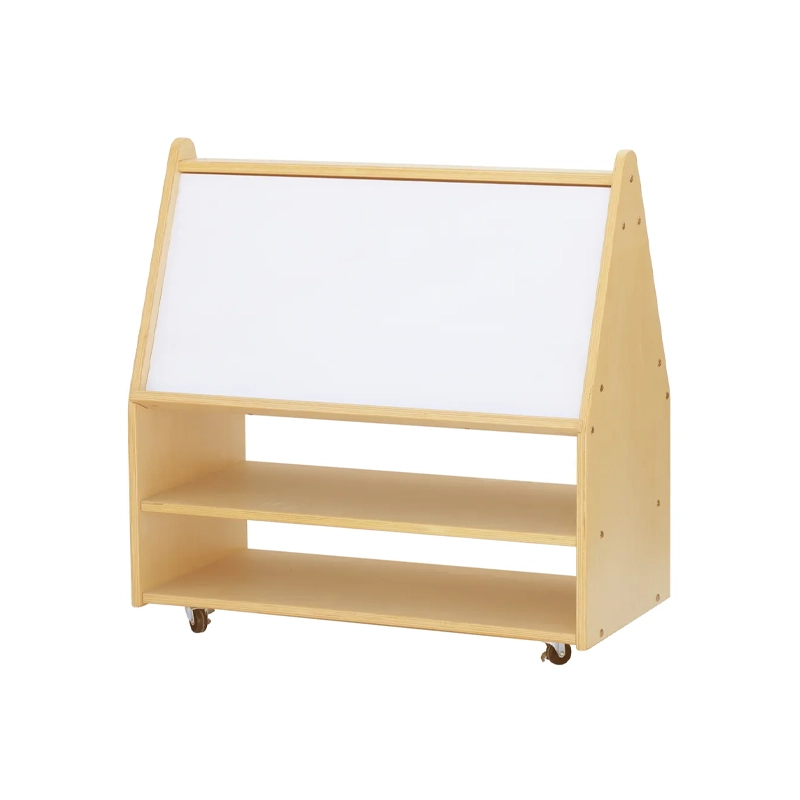
Large Flexible Art Station

Acrylic Space Saver Easel

Daycare Clear Easel

Preschool Floor Easel

Metal Easel with Drying
What should I look for when buying an easel?
Several key factors must be considered when selecting a preschool easel to ensure it meets your child's needs. These factors include size, stability, material, space requirements, adjustable height, and storage capacity. Let’s break these down:
Size and Height
Choosing an easel that’s the right size for your child is crucial. The easel should be tall enough for your child to use comfortably while standing or sitting. Look for easels with adjustable height so they can grow with your child. This will ensure they have a comfortable and ergonomic experience over time.
Стабильность
A stable easel is necessary for young children, who may push on it with their hands or bump into it. Look for easels with a sturdy base and non-tip design. Some easels even come with a safety lock to prevent any accidents.
Материал
The material used in the construction of the easel can affect its durability and safety, but wood is generally a durable and sturdy material. Still, plastic easels can be lighter and easier to move around. Choose a non-toxic material to ensure your child’s safety, as preschoolers tend to put things in their mouths.
Space Requirements
Ensure the easel fits comfortably in the space where it will be used. Measure the area where you intend to place the easel, and ensure there’s enough room for the child to work freely without bumping into furniture or other objects.
Регулируемая высота
As children grow, the easel must grow with them. Easels with adjustable height settings allow your child to use them comfortably at different stages of development, ensuring they get years of use out of the investment.
Емкость для хранения
Easels with built-in storage make keeping art supplies organized and within reach easier. Consider whether the easel has trays, shelves, or other storage options to store markers, brushes, and paper. This can save you the trouble of needing extra storage nearby.
Types of Easels
There are several types of easels available on the market, and each one has its unique features. Let’s take a closer look at the most popular types:

Single-Sided Easels

Double-Sided Easels

Tabletop Easels
Materials Used in Preschool Easels
Preschool easels come in a variety of materials, each with its benefits. Let’s look at the most common materials used:
-
Древесина Wooden easels are sturdy, durable, and have a classic look. They can be more expensive but tend to last longer with proper care. Wooden easels also provide a more natural, eco-friendly option for parents concerned about the environment.
-
Пластик Plastic easels are lightweight, easy to move around, and typically more affordable than wooden easels. They are great for younger children as they are less likely to cause injury if bumped or knocked over. However, plastic easels may not be as durable over time.
-
Металл Metal easels are strong and often have a sleek, modern design. They are typically used in classroom settings but may not be as comfortable or child-friendly as wood or plastic. Metal easels are often more stable and offer adjustable features.
-
Mixed Materials Many easels combine various materials, such as a wooden frame with a plastic surface, to combine the benefits of both durability and ease of cleaning.
Benefits of Using Easels in Preschool
Easels provide a host of benefits for preschool children, far beyond just being a tool for creating art. When children engage with easels, they experience a wealth of developmental advantages. Here are some key benefits:
Творчество и воображение
Easels give children the freedom to explore their creative potential using a variety of mediums, such as markers, crayons, or paints. This helps them build imagination and confidence in their ideas.
Motor Skills Development
Drawing, painting, and even using the easel require fine motor skills vital for handwriting and other later skills. Easels also help improve hand-eye coordination.
Когнитивный рост
As children engage with easels, they not only explore colors and shapes but also learn problem-solving skills, following directions, and understanding spatial relationships.
Independence and Confidence
Easels encourage children to work independently, allowing them to create freely and gain confidence in their abilities.
Classroom-Ready Paint Supplies
We have a complete line of painting supplies, including washable tempera paints, finger paints, watercolor sets, paint sticks, and poster paints. We also offer specialty paints, including glow-in-the-dark and metallic colors, to enhance any art class experience. All of our paints are non-toxic, ensuring a safe learning environment for students.


Tempera Paint

Watercolor Paint

Finger Paint

Washable Paint

Acrylic Paint

Poster Paints

Glow in The Dark Paint

Metallic Paint
Preparing for a Painting Session
Before you let the preschoolers start painting, make sure you are fully prepared. Here’s what you’ll need to do:
Set up a safe workspace
Lay down protective sheets or a tablecloth to prevent paint from getting on furniture. Make sure the area is well-ventilated.
Wear protective clothing
Have aprons or old shirts for children to wear to protect their clothes.
Clean-up supplies
Keep soap, towels, and paper towels nearby for easy clean-up. Also, ensure a designated area for washing hands after the activity.
Надзор
Always supervise the children to ensure they use the materials safely and don’t ingest any paint.
Types of Paints for Preschoolers
Different types of paint are available, each offering unique benefits for preschool activities. Choosing the best one will depend on the desired effect, ease of cleanup, and the child’s developmental stage.

Watercolor Paints
Watercolors are a great option for preschoolers. They are easy to blend, lightweight, and typically washable, making them a favorite for younger children just beginning their painting journey.
Плюсы:
- Transparent and easy to manipulate.
- Requires minimal setup.
- Quick cleanup.
Минусы:
- It can be difficult for young children to control, especially when applied in large quantities.

Finger Paints
As the name suggests, finger paints are intended for finger painting and are a perfect choice for preschoolers. These paints are typically thick, washable, and non-toxic, designed for direct tactile experiences.
Плюсы:
- Sensory experience is suitable for fine motor skills.
- Messy fun, which encourages hands-on creativity.
- Easy to clean off surfaces and hands.
Минусы:
- It can get very messy, so preparation is key.

Tempera Paint
Tempera paints are another popular choice for preschool painting. These paints are thicker than watercolors but still washable, and they are ideal for creating vibrant, opaque images.
Плюсы:
- Bright, bold colors that are easy to mix.
- Great for a variety of paper types.
Минусы:
- Can stain clothing, so aprons are a must.

Acrylic Paint (Not Ideal for Younger Kids)
While acrylic paints are used widely in art and crafts, they are not typically recommended for preschoolers. Acrylic paint is more challenging to wash off and may contain chemicals unsuitable for young children.
Плюсы:
- Bold colors.
- Long-lasting and durable.
Минусы:
- Not easy to clean off skin or surfaces.
- Contains chemicals that may not be suitable for young children.

Washable Paints
This category includes all types of paints that are easy to clean and can be washed off skin, clothes, and surfaces with soap and water. Washable paints are highly recommended for young kids.
Плюсы:
- Easy to clean up.
- Non-toxic and safe for young children.
- Available in various forms (watercolors, tempera, etc.).
Минусы:
- Some may not offer the same vibrant colors as non-washable paints.
Essential Preschool Paint Brushes and Tools
Now that we've covered the types of paint, let's dive into the brushes and tools you'll need. Preschoolers are still learning to control their movements, so choosing the right brushes and tools is essential for a positive experience.

Brushes
Use soft, sturdy brushes that are easy for small hands to grip. Round-tipped brushes are ideal for broad strokes, while flat brushes are better for fine lines or filling large areas. Also, consider brushes with ergonomic features.

Sponges
Sponges can be an exciting tool for creating texture and adding variety to a painting project. Kids love experimenting with sponges as they create unique effects and patterns on their artwork.

Rollers
Mini paint rollers make large, even strokes on bigger surfaces. Preschoolers can use them to create patterns, textures, and even more polished-looking projects.

Palettes and Paint Trays
Simple plastic palettes or paint trays are ideal for kids who are learning to mix their own colors. They are easy to clean and allow children to experiment with color mixing without creating too much of a mess.
Additional Materials for Preschool Art Projects
Beyond the basic paint supplies, there are a few additional materials you may want to consider to enhance the preschool art experience.

Easels
An easel gives children a dedicated space to paint and helps them develop standing motor skills. It can be as simple as a sturdy tabletop easel or a larger standing model.

Paper
Choose thick, high-quality paper designed for the type of paint you’re using. A thicker, absorbent paper works best for tempera and finger paints, while watercolor paper is ideal for watercolor paints.

Aprons and Smocks
To keep your preschoolers clean and protected, invest in some aprons or smocks. These should be easy for children to put on and take off and durable enough to withstand frequent washing.
Essential Drawing Supplies for Early Learning
We offer a comprehensive range of drawing supplies. Our product line includes crayons, colored pencils, graphite pencils, markers, chalks and drawing boards, which are designed for young children's hands-on and creative needs and suitable for students of all skill levels. We also provide professional drawing tools such as templates, rulers and erasers to help them perfect their skills.


Crayons

Pencils

Colored Pencils

Washable Paint

Preschool Chalk

Poster Paints

Sharpeners

Erasers
Basic Categories of Drawing Supplies for Preschooler
Regarding preschool drawing materials, there are several essential categories that every parent or educator should be familiar with. These include:

Crayons
A classic choice for young children, crayons are easy to use and come in various colors.

Маркеры
Markers offer bold colors and can be a great way for children to explore vibrant drawings.
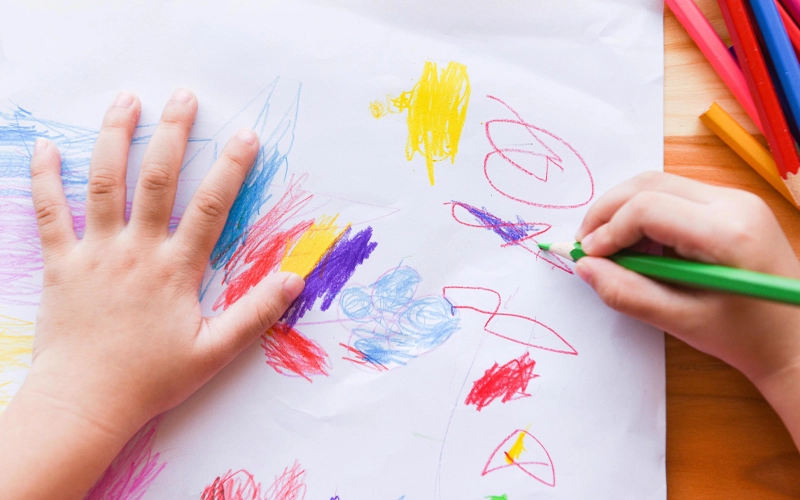
Colored Pencils
Perfect for detailed drawings, these supplies are excellent for promoting fine motor control.
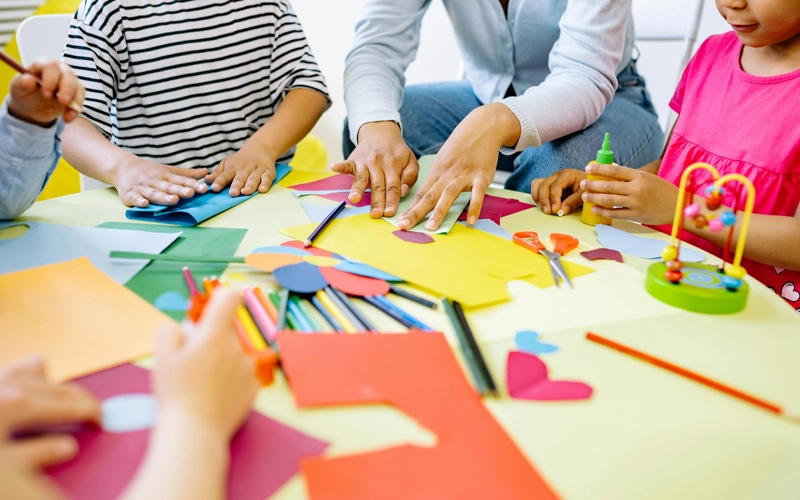
Paper
The surface on which children draw matters—different types of paper can enhance the drawing experience.

Paint
For more advanced drawing techniques, tempera or watercolor paints provide new ways for children to express themselves.
Choosing Drawing Supplies for Different Age Groups
Understanding your child's developmental stage is key when selecting the right drawing supplies. Different age groups have varying abilities, and it's important to choose materials that will help them grow while ensuring safety and ease of use. Below, we break down the best drawing supplies for toddlers, young preschoolers, and older preschoolers, ensuring they get the most out of their artistic journey.

For Toddlers (Ages 2-3)

For Young Preschoolers (Ages 3-4)

For Older Preschoolers (Ages 4-5)
Choosing the Right Drawing Paper
Paper is just as important as the drawing tool itself. The type of paper can affect the final result, so it’s important to choose the right kind for children’s needs. Here are some factors to consider:
Thickness of Pape
Preschoolers often use markers, crayons, or colored pencils, so it’s important to choose a paper that is thick enough to prevent bleeding through. Heavier cardstock or construction paper is ideal for these materials.
Texture of Paper
The texture of the paper can impact the drawing experience. Smooth paper is best for markers and colored pencils, while textured paper can add an interesting effect for crayons and chalk.
Size of Paper
Consider using larger sheets of paper to give preschoolers plenty of space to express themselves. Larger sheets also accommodate the use of more materials like markers, crayons, or even finger paints.
How to Set Up a Daycare Drawing Activity
Creating the right environment for drawing can make the experience more enjoyable and engaging for preschoolers. Here are a few tips for setting up a kindergarten drawing session:
-
Create a designated space Set up a clean, safe area where the child can draw without worrying about making a mess. A washable surface or a mat can protect your floors or furniture.
-
Provide various materials Offering different materials (crayons, markers, colored pencils, etc.) gives children more opportunities to experiment and express themselves creatively.
-
Encourage open-ended play Instead of directing the child’s drawings, encourage them to explore their creativity and draw whatever comes to mind.
Safety Considerations for Daycare Drawing Supplies
The safety of drawing supplies is paramount when selecting materials for young children. Here are some safety tips to ensure your preschooler’s safety during drawing activities:
Нетоксичные материалы
Always look for drawing supplies labeled as “non-toxic.” Most reputable brands offer crayons, markers, and colored pencils that are safe for children.
Washable items
Opt for washable markers and crayons. This will make clean-up easier and prevent staining on clothing and furniture.
Child-friendly tools
Choose supplies that are easy to hold and designed for small hands. For example, chunky crayons and markers are better for younger children.
Надзор
Always supervise your child during art activities to ensure they use materials safely and don’t put things in their mouths.
Creative and Fun Crafty Stuff for Preschool Projects
Our crafty stuff collection includes various hands-on materials perfect for preschool and daycare craft projects. Options include foam shapes, pom-poms, googly eyes, pipe cleaners, craft sticks, glitter, felt sheets, buttons, beads, feathers, and sequins. Designed for young learners, all materials are safe, colorful, and easy to use, helping children explore textures, patterns, and creative assembly in early learning environments.


Preschool Paper Pack

Felt Sheets

Mix Pom Poms

Glitter Shapes

Craft Feathers

Pipe Cleaners

Craft Sticks

Child-safe Scissors

Liquid Glue

Art Tape

Play Dough

Preschool Art Buttons
Key Considerations When Choosing Preschool Crafty Stuff
Before diving into the specific supplies, let’s go over some key considerations when choosing crafty materials for young children:
Безопасность прежде всего
Always look for non-toxic, child-safe materials. Avoid items with small parts that can pose a choking hazard.
Age-Appropriate Supplies
Choose supplies that are specifically designed for young children. Materials should be easy to handle, and the tools should be ergonomically designed for small hands.
Washability
Crafty activities can get messy. Select supplies that are easy to clean from clothes, furniture, and skin.
Encourage Open-Ended Creativity
Opt for materials that give children the freedom to express themselves without limiting their creativity.
Safety Considerations for Crafty Stuff
Ensuring the safety of the materials is the top priority when choosing crafty stuff for preschoolers. Here are some safety considerations to keep in mind:
Non-toxic and Washable
Always opt for supplies labeled as non-toxic and washable to minimize health risks and make cleanup easier.
Надзор
Supervise your child using materials like scissors, glue, or beads to ensure they are used appropriately.
Avoid Small Parts
Materials with small parts should be avoided unless your child is old enough to use them safely under supervision.
Age-Appropriate Tools
Ensure that tools and supplies suit the child’s age. Scissors, glue, and other craft items should be designed for young hands.
How to Organize Crafty Stuff for Preschoolers
Keeping all the crafty stuff organized is essential, especially when you have a variety of supplies. Consider these tips to maintain an organized craft area:

Use Clear Storage Bins
Store materials like markers, crayons, and beads in labeled, clear bins so children can easily find what they need.

Craft Cart or Shelf
Create a dedicated space for all craft supplies, keeping them accessible but neat.

Portable Craft Containers
For mess-free crafting, store glue, scissors, and other essentials in small containers that can easily be removed and put back.
Tips for Encouraging Creativity with Crafty Stuff
Once you have your crafty supplies sorted, it’s time to get creative! Here are some ideas to encourage your preschooler to think outside the box and explore their imagination:
- Provide Free-Form Projects: Let children decide what they want to make, whether it’s a picture, a sculpture, or a homemade card. This freedom encourages their creativity.
- Create Themes: Design craft sessions around fun themes like animals, seasons, or favorite characters. This can help direct their efforts while still allowing for individual creativity.
- Make It a Group Activity: Crafting with friends or family fosters social skills, cooperation, and teamwork. You can organize group craft sessions at playdates or in the classroom.

